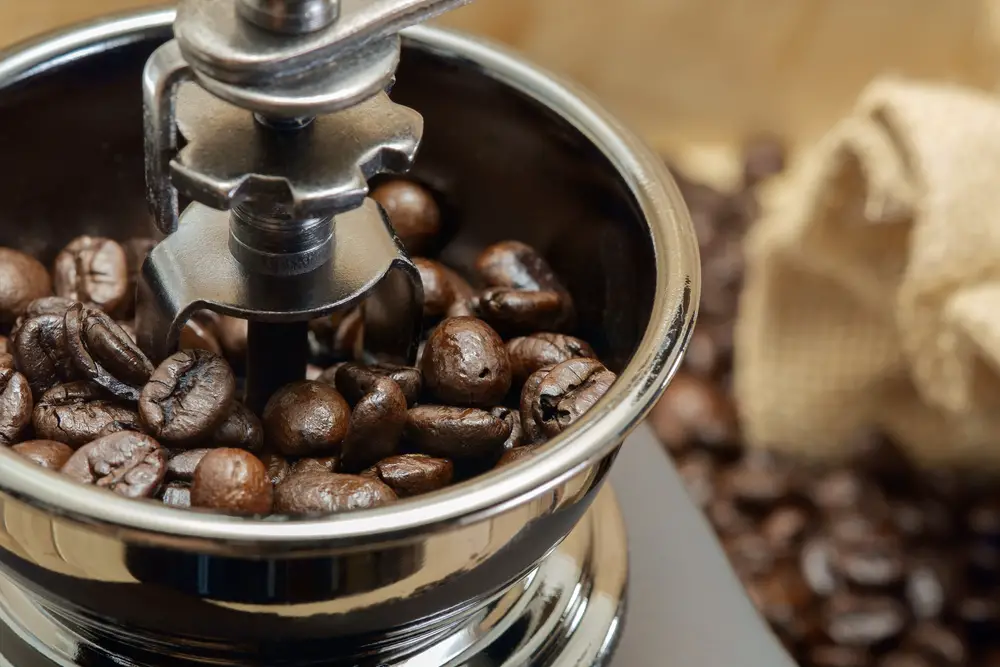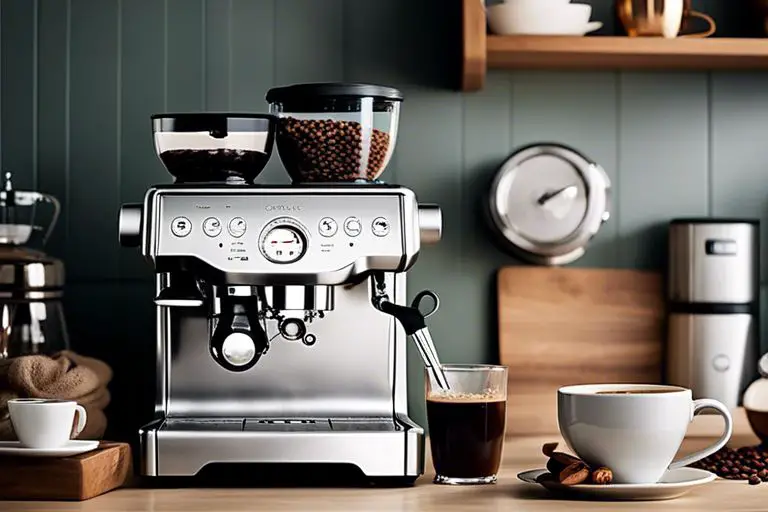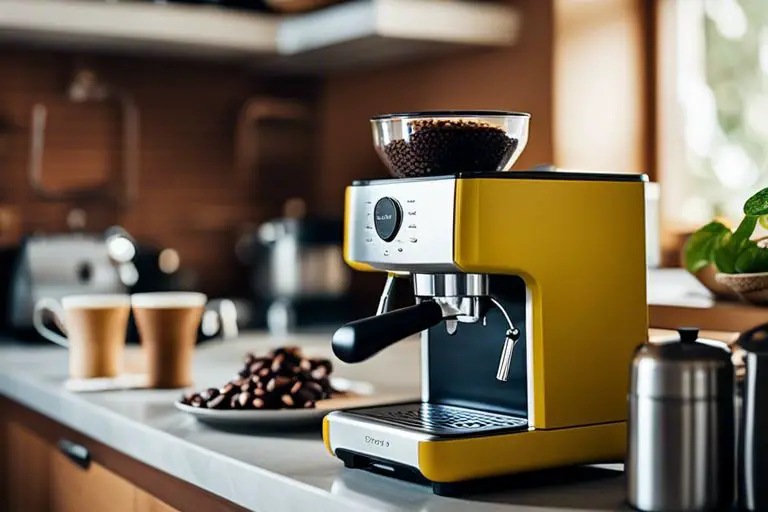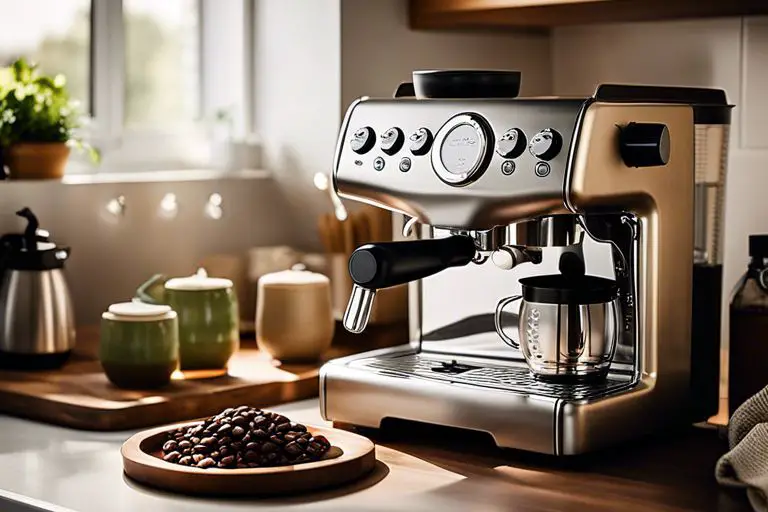If you’re a coffee lover like us at Trusted Coffee Reviews, you will know that coffee beans give a much better flavor than pre-ground coffee. There’s just something special about freshly ground coffee beans that pre-ground coffee can’t offer.
But it can be difficult to grind fresh coffee beans if you do not have the right appliances at home. The good news is, you may have a device in your kitchen right now that can grind up those beans so you can have the most delicious cup of coffee every morning from now on.
There are several options to try out when it comes to grinding coffee beans. These include using a pestle and mortar and, of course, a coffee grinder. But what about using a blender to grind your coffee beans? Yes, this is also possible!
That’s right! If you have a blender, you can grind coffee beans inside it. Just by taking a small number of coffee beans and blending them for a few seconds, you can create a coarse blend. If you want a finer grind, feel free to grind the beans for even longer!
As you may know, there are many ways of making a delicious cup of coffee. You can choose from a variety including lattes, macchiatos, cappuccinos, espressos, and more. But for most baristas and coffee preparers (like yourself), the first step to creating a perfect cup of caffeine goodness is to grind roasted coffee beans.
We are going to take an in-depth look at how to grind coffee beans in your blender and important factors to consider when doing so.
Grinding coffee beans in a blender
All hail the blender! This innovative appliance has made life so much easier for many of us. This jug lookalike includes rotating blades at the bottom that cut and blend different food items in a fraction of the time.
Newer models, such as the immersion blender, features motors on the lid which makes them suitable for a variety of containers. So, while blenders are extremely useful in the kitchen, are they as beneficial when grinding coffee beans?
While blenders can grind coffee beans, they are not as effective as coffee grinders. Blenders can not grind with the same precision but are a great alternative if you lack a coffee grinder. The most important thing is to know how to use your blender when grinding coffee beans.
How to use a blender when grinding coffee beans
So, you have a fresh batch of coffee beans but you’re lacking a coffee grinder. Yes, it’s time to get your trusted blender out from storage. To produce a high-quality coffee powder with a blender, you will need fresh coffee beans, a sieve, and some additives if you want a specific type of coffee (i.e. spiced).
Here are the steps for grinding coffee beans in a blender:
Step one
Place the coffee beans in the blender’s reservoir. Up to a quarter of the cup’s capacity should suffice. Because the coffee beans are quite large and solid, you will need to start with a small serving.
This will prevent the blender’s blades from becoming damaged as they strain against the strong beans. The smaller the amounts, the finer the powder will be. Close the lid when done.
Step two
Run your blender on the pulse mode for approximately 20 to 30 seconds. Keep an eye on the container’s heat so that it doesn’t get too hot. If it does heat up considerably, cease any grinding for 2 to 4 minutes and wait for the container to cool. Once cooled, continue with the process.
Step three
Take a note of the powder’s consistency. This is to help you avoid ending up with large chunks of coffee beans. Once the right consistency is found, place this batch aside and refill with another. Remember to continue with small servings. Set the rotational speed at medium until you end up with a fine coffee powder.
Step four
Once all of the beans have been ground, check the consistency once more. If this is not uniform, repeat the process. To remove the coarseness of the beans, we recommend using a sieve for the best results.
Step five
Maybe you like to add some special flavorings to your coffee. If so, you can combine some additives with the coffee beans whilst in the blender. Some popular flavors include vanilla, ginger, and cinnamon.
That’s how simple it is to grind coffee beans in a blender! This should work for all models as long as you do short, sharp bursts of blending with the beans. Once you have ground your coffee beans, ensure that you wash the blender thoroughly so the smell of coffee doesn’t remain inside.
Just remember some important tips when grinding coffee in a blender:
- Never try and blend a large number of coffee beans in your blender as this can clog the appliance and damage it.
- Do not continuously blend coffee beans. Go for short, sharp pulses. Heat in the blades can generate if you do it continuously which, in turn, heats up the oils in the beans resulting in a more bitter taste.
- Never grind your beans in a wet blender. Ensure that your blender is completely dry. If not, you may end up with a big slushy mess and a waste of perfectly good coffee beans.
Can you grind coffee in a Nutribullet, Vitamix, and Ninja blender?
It is possible to grind coffee in all three. The milling blade of most Nutribullet models should be able to handle the coffee beans easily. Consider using the NutriBullet ZNBF30500Z Blender Combo for the best results, although the original Nurtibullet should be just as effective.
Using a Vitamix can be just as efficient at grinding beans. By increasing the speed from 1 to 8 and then grinding your coffee beans for about 10 seconds, your ground should be perfect for French press, cold brew coffees, and pour-over coffees.
A Ninja blender is another great option for grinding coffee beans. You may have to pulse the grind 8 to 12 times for your desired results. Whichever method you use, you should end up with delicious coffee every time.




